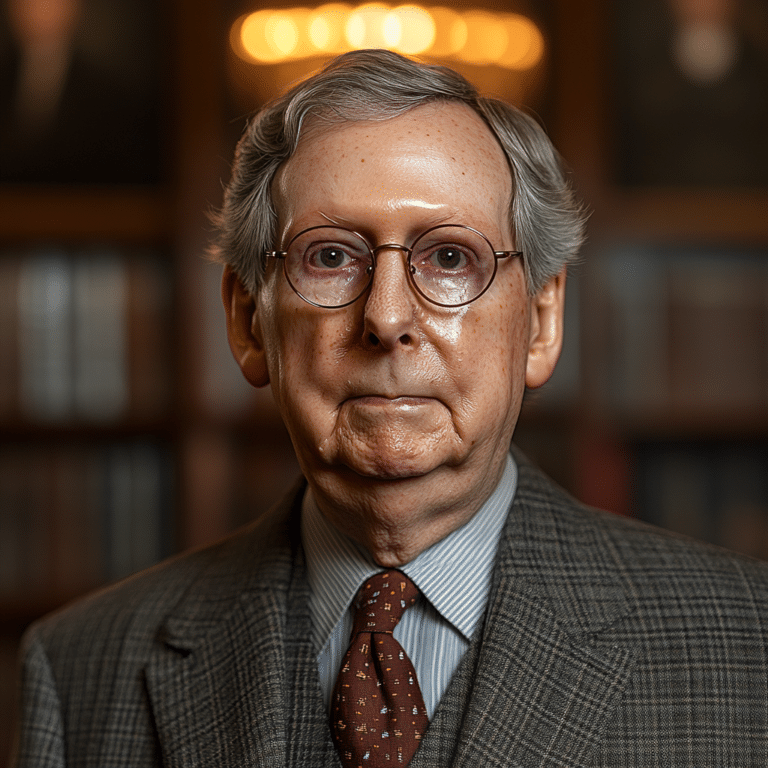In today’s political landscape, the concept of majority power holds significant sway over how democracy functions. Majority power serves as the backbone of political discourse, underpinning legislative actions, shaping policies, and influencing public opinion. A vibrant and responsive democracy harnesses this power, using it to reflect the values and priorities of the larger population. However, as we’ll dive into, this power can often elicit a mixed bag of results, particularly regarding the preservation of conservative principles and addressing the challenges posed by the growing influence of minority movements.
The Power of Majority in Shaping Political Landscapes
When we talk about majority power, we’re discussing more than just numbers. It’s a fundamental force that drives political change. The majority often dictates not just who gets elected but also which policies move forward. For example, state-level conservative leaders have often pushed back against the so-called ‘Woke’ agenda, reflecting a determination to hold onto traditional values. This push is usually rooted deeply in the belief that the majority of Americans want to preserve their cultural heritage and resist rapid changes to societal norms.
Consider the significant impact of the Republican majority under President Trump. The passage of the Tax Cuts and Jobs Act in 2017 was a crucial turning point, showcasing how majority control could revive the economy and promote individual fiscal responsibility. With the majority supporting this tax overhaul, it stood as a testament to the effectiveness of conservative governance in driving policy based on what the voters wanted. This type of legislative control proves that the majority can enact laws that resonate with traditional conservative values, keeping the party’s core principles alive in a rapidly changing world.
However, it’s essential to recognize the challenges that come with majority power. The Republican Party often finds itself at odds within its ranks, wrestling with the balance between mainstream conservative beliefs and populist sentiments that have surged since the Trump era. Recent Congressional sessions reveal how these internal tensions can threaten party unity, making it crucial for leaders to identify and honor the desires of the majority without alienating the party’s core supporters.

Top 5 Ways Majority Power Influences Conservative Policy Making
1. Legislative Control: The Power to Enact Laws
A majority in Congress can fast-track legislation vital to conservative principles. The 2017 Tax Cuts and Jobs Act stands as a brilliant example, altering tax laws to favor economic growth, a central tenet of conservative ideology. When the majority is aligned with conservative views, significant and swift changes can occur, reinforcing belief in fiscal responsibility and stability.
2. Judicial Appointments: Shaping the Judiciary
A Republican majority in the Senate allows administrations to strategically appoint judges who reflect conservative values. The confirmation of Justices Neil Gorsuch and Brett Kavanaugh is prime evidence of how pivotal this power can be. These judicial appointments can profoundly influence rulings on key issues from Second Amendment rights to abortion, showing the long-lasting consequences of majority power in shaping the judiciary.
3. Accountability Through Voting Trends
In states like Florida, where the majority holds power, policies can reflect the prevalent conservative ideology. The “Parental Rights in Education” law has stirred controversy yet showcases how a unified Republican majority can implement legislation that aligns with traditional family values. These policies challenge what conservatives view as radical shifts promoted by the left.
4. Influence on National Discourse and Media
Majority power isn’t confined to legislative chambers; it extends into the media landscape. Conservative figures like Tucker Carlson leverage their platforms to amplify majority viewpoints, effectively steering public discourse in a direction that supports conservative policies. The way media portrays issues creates a feedback loop, reinforcing the values cherished by the majority.
5. Challenges and Tensions Within the Majority
Navigating majority power is not without hurdles. The Republican Party has seen an internal struggle between classic conservatism and populist movements, especially during and after Trump’s presidency. This tension can create roadblocks for effective governance and challenge party unity as leaders work to interpret the desires of the evolving majority within their ranks.
The Role of Majoritarianism in American Democracy
Majoritarianism serves as the bedrock of democratic governance but also presents critical challenges. While it often reflects the will of the majority, it can alienate minority perspectives, prompting debates on how democracy can safeguard diverse voices. The emergence of movements like Black Lives Matter and LGBTQ+ rights underscores the necessity of a democracy that prioritizes dialogue and understanding rather than simply counting votes.
Conservative values advocate for a balanced approach, ensuring that laws and policies aren’t merely dictated by the majority, which can sometimes lead to negligence in addressing minority concerns. The challenge lies in creating a system that respects majority rule while carving out space for differing opinions—an essential aspect of a true democracy.

The Future of Majority Power in a Polarized Era
Looking ahead, majority power will continue to exhibit complexities shaped by America’s political polarization. The divide between traditional conservatives and more extreme factions raises crucial questions about achieving compromise in governance. Will the Republican Party find a way to blend populist enthusiasm with time-honored principles, or will it splinter under the weight of diverging ideologies?
As movements on both sides intensify, the sustainability of a majoritarian democracy faces newfound tests. Voter engagement must transcend party politics to foster a spirit of cooperation and shared understanding. If lawmakers are willing to listen and adapt, guided by the principle of representing the majority while respecting minority rights, the prospects for a well-functioning democracy may remain bright.
Redefining Our Understanding of Democracy
In an era of rapid change, it’s crucial to reassess how we interpret democratic principles. Rather than focusing solely on majority rule, we must encourage dialogue and compromise, striving for an inclusive political framework. By doing so, democracy can honor the voice of the majority while protecting the rights of minorities.
Engaging in thoughtful discourse about majority power will empower citizens to navigate the complexities of modern governance. Ultimately, understanding the implications of this power helps retain the vibrancy of democracy, assuring that it remains a responsive system that truly reflects society’s collective will.
As we embrace the strengths and tackle the challenges of majority power in shaping our democracy, we can build a future that respects both the voice of the voters and the essential diversity that makes our nation exceptional. So let’s unite, champion conservative values, and ensure that democracy serves all, creating a brighter pathway forward.
The Majority: Fun Trivia and Interesting Facts
The Majority in History
Did you know that the concept of majority has been pivotal in shaping democracies around the globe? The classic phrase “the majority rules” reflects this fundamental principle. Looking back in time, one notable figure, Ivan Dixon, brought stories of the majority’s struggles against oppression to the silver screen, helping audiences understand the weight of majority perspectives in societal changes. Speaking of majority influences, the power of cinematic representation can’t be overstated. Check out Dacre Montgomery ’ s Movies And TV Shows to see how popular culture often mirrors the majority view, connecting with the masses in powerful ways.
The Majority Today
In today’s democracy, the majority’s voice continues to matter immensely. However, it’s not just about numbers; it’s about quality. For instance, just as Michael Porter jr. stands out in basketball, symbolizing excellence in reaching the majority’s ideals of performance, the voices that dominate discussions in politics today reflect diverse perspectives. Moreover, major shifts are often spearheaded by those willing to push for change, much like how public figures like Jose Antonio ibarra catalyze conversations on reform and advocacy. These figures help guide public opinion toward understanding the importance of active participation in a democracy.
The Fun Side of Majorities
Here’s a fun tidbit for debate lovers: Did you know that majorities can also reflect shifting trends? Just think of the vast differences in how people once viewed swimwear—Taylor Swift Bikinis today evoke different reactions compared to past decades! This illustrates how cultural norms shape majority opinions. Also, if you’re interested in health trends, there’s been a large shift toward fitness, with many searching for the best protein powder For weight loss—a true testament to how majority health trends influence our buying habits. Just as in sports, understanding the majority can give insights into public sentiment and can ultimately guide decision-making, both politically and personally. So whether you’re pondering how many rings Tom Brady has or what’s trending on platforms like Onlydans, it’s crucial to grasp the majority’s influence at play!

What does by the majority mean?
“By the majority” refers to a situation where more than half of a group is in agreement or prefers a particular choice. It’s all about having that larger number on your side.
Does majority mean over 50%?
Yes, majority means having over 50%. It’s about having more than half of the votes or participants in favor of something, which is often seen as a clear win.
What are 3 synonyms for majority?
Three synonyms for majority are “bulk,” “greater number,” and “predominance.” Each of these words highlights that someone or something has more than their fair share or larger portion.
What is the majority in politics?
In politics, the majority often refers to the political party or coalition that holds more than half of the seats in a legislative body. It’s crucial because it determines who can push through laws and policies.
Does majority mean a lot?
While it might seem like it, majority doesn’t just mean a lot; it specifically means having more than half of something, like votes, rather than just a big number overall.
What is a 2/3 majority vote in the house?
A 2/3 majority vote in the House means that at least two-thirds of the members must agree on a decision, which is often required for significant changes or actions.
Is a majority vote 51%?
No, a majority vote is not exactly 51%. While 51% is often seen as a slim majority, the term “majority” strictly means any number that exceeds half of the total votes.
Is 50% a majority stake?
No, 50% is not considered a majority stake. It’s really about having more than half, so 50% is just a tie and doesn’t fulfill the majority requirement.
What is legally considered a majority?
Legally, a majority is defined as more than half of a total number. This applies in various contexts like voting, shares in a company, or juror agreements.
What is the opposite of majority?
The opposite of majority is minority, which refers to a smaller segment of a group that has less than half of the total votes or seats.
What does majority status mean?
Majority status means holding more than half of something, like votes or legislative seats, which gives that group the power to make decisions and lead.
What is a fancy word for rule of three?
A fancy word for the rule of three is “triadic structure.” It’s often used in language and storytelling to create a satisfying rhythm or pattern.
Do Democrats have a majority in the House?
As of now, the Democrats do not have a majority in the House. The political landscape can change, but that’s the situation at this moment.
What is an absolute majority?
An absolute majority means that more than half of the total votes are required, typically in situations where a clear decision is needed, without any ties.
Who is the current majority?
The current majority often refers to the political party that has more than half or the group in power in a specific legislative setting, which can shift based on elections and votes.
What does majority mean in a court case?
In a court case, majority means the opinion or ruling favored by more than half of the judges or jurors involved. This majority opinion usually sets the legal precedent.
What is the meaning of 2 3 majority?
A 2/3 majority means that at least two-thirds of the voters or representative body agrees on an issue, used for important decisions that need broad support.
What does it mean to go with the majority?
To go with the majority means to agree or align your position with the most popular or common choice made by a group, often aiming for harmony or consensus.
What does won by a majority of mean?
“Won by a majority of” means that the winner received more than half of the total votes, showcasing a clear preference or decision from the voters involved.





































